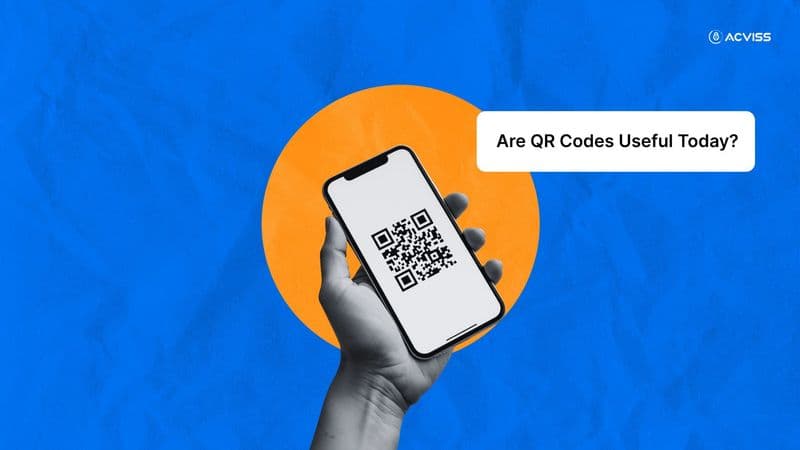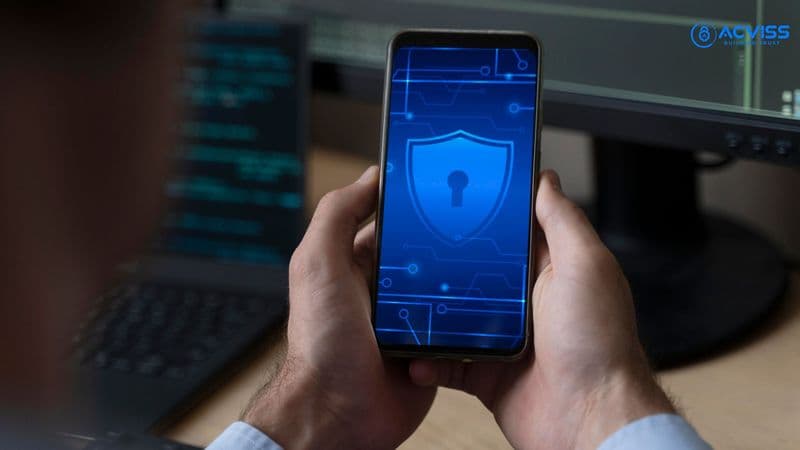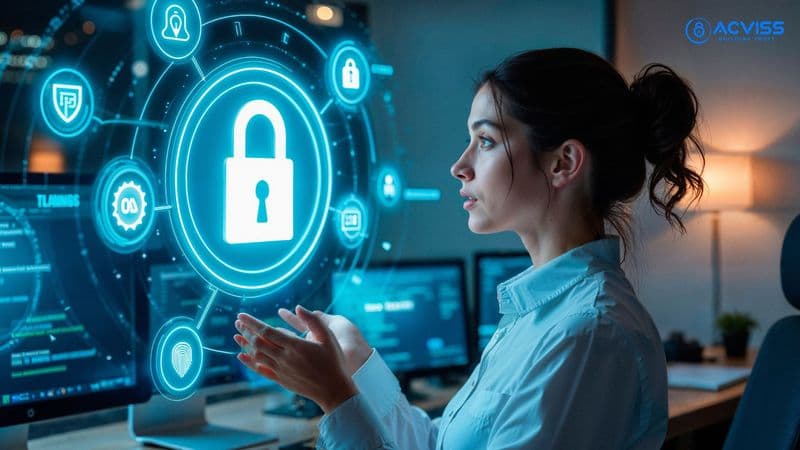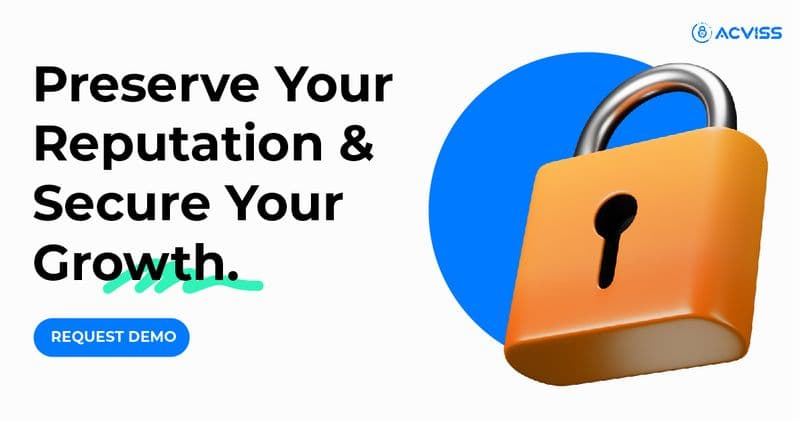Are QR Codes Useful: Why Non-Cloneable Technology is Necessary for Your Brand

Your customer scans the QR code on your product. It takes them to your website. Everything looks legitimate: the branding, the product details, even the verification message that says "Authentic Product." But here's what they don't know: a counterfeiter printed the exact same code on a fake sitting two shelves away.
QR codes have exploded in popularity. We're talking 2.9 billion users globally and 41.77 million scans in 2025. That’s a staggering 433% increase from previous years. Brands use them for everything from product authentication to loyalty programs, supply chain tracking to instant consumer engagement.
But here's the uncomfortable truth: standard QR codes are shockingly easy to clone. And that vulnerability is costing brands billions in lost revenue, damaged reputation, and eroded consumer trust.
This blog breaks down where QR codes still deliver value, where they fail catastrophically as an anti-counterfeit measure, and why non-cloneable authentication technology isn't just a nice-to-have anymore, it's a business survival strategy.
The QR Code Boom: Still Growing in 2025
Let's start with what's working. QR codes aren't going anywhere; in fact, they're more embedded in consumer behaviour than ever before.
The numbers tell the story:
- Global QR code market value: $3.78 billion
- 80% of smartphone users scanned at least one QR code in 2023, with adoption continuing to rise
What brands are using them for:
- Product verification and origin tracing – Linking physical products to digital records
- Consumer engagement – Gamification drives 16% scan rates, turning packaging into interactive experiences
- Secure logins and access control – 59% adoption rate in authentication workflows
- Supply chain tracking – Real-time visibility across logistics networks
The business case is clear: 70% of brands now use QR codes for operations, logistics, or security purposes. Real-time authenticity checks via mobile apps have become standard practice, with 16.2% of consumers engaging monthly with brand QR codes.
Here's the key takeaway: QR codes aren't going anywhere. They're fast, flexible, and consumers know how to use them. But usefulness doesn't equal security.
Where QR Codes Work (And Where They Don't)
Not all QR code applications are created equal. Understanding where they excel and where they create vulnerabilities is critical for a brand protection strategy.
Where They Excel
1. Marketing campaigns and instant engagement
QR codes seamlessly bridge the physical and digital worlds. Point your phone, scan, and you're connected, whether it's a menu, a product video, or a promotional offer.
2. Contactless payments and check-ins
Security-enhanced QR systems have reduced check-in times by 50% in enterprise settings. When properly encrypted and integrated with secure backends, they work brilliantly.
3. Dynamic content delivery
AI-driven QR codes can now serve personalised content based on location, time of day, or user behaviour, turning static labels into smart marketing tools.
Where They Start to Fail
1. The trust gap
Only 50% of users fully trust brand QR codes. Why? Phishing attacks, malicious redirects, and fake QR stickers have trained consumers to be sceptical.
2. Authentication weakness
Here's the problem: anyone can print the same QR code. There's no built-in mechanism to verify that the physical label is genuine, only that the code itself links to a valid URL or database entry.
3. No tamper evidence
Physical QR stickers can be peeled off genuine products and placed on fakes, or replaced entirely, without leaving any trace.
4. Vulnerability to malware
Counterfeiters don't just copy codes; they create malicious versions that look identical but redirect to phishing sites or download malware.
The Reality Check
Use Case | QR Code Effectiveness | Risk Level |
|---|---|---|
Marketing & engagement | ✅ High | Low |
Payment authentication | ✅ High (with encryption) | Medium |
Product verification | ⚠️ Moderate | High |
Anti-counterfeit protection | ❌ Low | Critical |
So QR codes work brilliantly for engagement and information sharing, until a counterfeiter gets involved. And that's where the real problem begins.
The Fatal Flaw: Why Standard QR Codes Can't Stop Counterfeits

Let's talk about the elephant in the room: QR codes are trivially easy to clone.
The Cloning Reality
Standard QR codes can be copied with basic equipment:
- Scan a genuine product's QR code with any smartphone
- Print it on fake packaging using a standard printer
- Apply it to counterfeit products
That's it. No specialised skills required. No expensive equipment needed.
The data backs this up:
- 20-30% failure rate in anti-counterfeit use cases due to simple replication
- 70% of online counterfeits use cloned QR codes
- Even encrypted QR codes allow physical duplication, the encryption protects the data, not the label itself
How Counterfeiters Exploit This
The process is devastatingly simple:
- Buy a genuine product
- Scan the QR code and note the URL or data structure
- Print identical codes on fake packaging
- Sell the counterfeits online or through grey market channels
- When consumers scan, they see "verified" and assume the product is genuine
Your brand loses revenue and reputation simultaneously.
Security Gaps in Detail
1. No inherent tamper-evidence
A QR sticker can be peeled from a genuine product and placed on a fake. Unless the label itself has tamper-evident properties, there's no way to tell if it's been moved.
2. Database vulnerabilities
If counterfeiters gain access to your verification system or understand the pattern of how codes are generated, they can create "valid" codes that pass authentication checks.
3. Physical vs. digital disconnect
A QR code proves the digital data is correct. It proves nothing about the physical product it's attached to. This disconnect is what counterfeiters exploit most effectively.
Industry Impact Stats
The counterfeit problem isn't theoretical; it's a $467 billion crisis:
- Global counterfeit trade represents 2.3% of total global imports
- 53% year-over-year rise in detected infringements
- Cosmetics sector loses €7 billion annually (10.6% of sales)
- Food sector: $40 billion in annual losses
- 70% of fake products are sold online, where QR verification gives a false sense of security
Real-World Example
A premium skincare brand implemented QR authentication to combat fakes. Within months, counterfeiters were printing the same codes on fake products. Customers scanned, saw "verified," and bought with confidence, until the counterfeit creams caused skin reactions.
The brand's customer service was flooded with complaints about "verified" products that weren't genuine. The QR system hadn't failed technically; it had failed strategically, because it couldn't distinguish between a genuine label and a cloned one.
The brutal truth: A QR code without non-cloneable security is just a suggestion. Counterfeiters don't respect suggestions.
What Makes a Label "Non-Cloneable"?
Non-cloneable technology represents a fundamental shift in how we think about product authentication. Instead of relying solely on digital verification, it embeds security into the physical label itself.
Core Concept
Non-cloneable labels incorporate unique, physically irreproducible features that cannot be duplicated even with professional printing equipment. They use:
- Physical Unclonable Functions (PUFs) – Microscopic variations created during manufacturing that are impossible to replicate
- Microstructures – Patterns visible only under specific lighting or magnification
- AI-encrypted patterns – Digital signatures tied to unique physical characteristics
The key difference: these features exist at the intersection of physical and digital security.
Key Technologies
1. Microstructure Security
Microscopic patterns are invisible to the naked eye but detectable by specialised scanning technology. These patterns are randomised during manufacturing, making each label unique. Think of it like a fingerprint; no two are identical, and they can't be forged.
2. Tamper-Evident Design
- VOID patterns that appear when labels are removed
- Self-destructing adhesives that fragment if peeling is attempted
- Heat-sensitive materials that change appearance under tampering
- Pressure-sensitive layers that show evidence of manipulation
3. AI-Encrypted Authentication
Each label carries a unique digital signature verified through mobile apps. AI algorithms analyse multiple security features simultaneously, detecting even sophisticated cloning attempts. When combined with blockchain, every scan creates a tamper-proof audit trail.
4. Hybrid Layering
The most effective approach combines multiple technologies:
- Holograms for visual verification
- QR codes for instant digital access
- Microtext is readable only under magnification
- Serial numbers tied to manufacturing records
One layer might be cloned by a determined counterfeiter. All layers together? Functionally impossible.
Why This Matters
The impact is measurable:
- 70-90% reduction in successful counterfeiting when non-cloneable technology is implemented
- Enables true "verify product" functionality, not just verification theatre
- Aligns with global regulations like the EU Falsified Medicines Directive (FMD) and the US Drug Supply Chain Security Act (DSCSA)
Real-World Impact: What Brands Lose Without Non-Cloneable Protection

Let's talk about cost. Not just the price of labels, but the price of not having proper protection.
Revenue Losses
The numbers are staggering:
- Brands in counterfeited sectors lose 10.6% of sales on average
- The authentication market is growing at a 14.9% CAGR to reach $101.6 billion by 2035, because brands are desperate for solutions that actually work
- 30% of counterfeits involve repackaging: genuine labels on fake products
When counterfeiters can simply copy your QR codes, you're funding their R&D with your brand equity.
Reputation Damage
94% of consumers fear harm from fake products. When they get burned by a counterfeit, they don't blame the counterfeiter; they blame you.
Here's what happens:
- One counterfeit incident triggers mass returns
- Social media amplifies the damage exponentially
- Recovery takes months or years, if it happens at all
- Customer lifetime value plummets as trust evaporates
Compliance Risks
Non-compliance isn't just about fines, it's about market access:
- Regulatory penalties can exceed $10 million when recalls are involved
- Stricter traceability laws (Legal Metrology Act in India, serialisation requirements globally) make inadequate authentication a legal liability
- Market access restrictions in regions with strict product protection standards
The Consumer Trust Premium
Here's the opportunity hiding in the challenge:
- 71% of consumers pay premiums for brands they can verify as authentic
- Brands with robust authentication see 40% reduction in counterfeit complaints
- Customer lifetime value increases significantly when trust is established through verifiable authenticity
The Hidden Cost
When a customer buys a counterfeit with your brand's QR code on it, they don't blame the counterfeiter. They blame you.
Every fake sale isn't just lost revenue; it's a trust account withdrawal you can't reverse. And in markets where consumer reviews and social proof drive purchasing decisions, that trust deficit compounds with every counterfeit sold.
Regional markets like India face additional challenges:
- Legal Metrology Act requirements for accurate labelling and declarations
- Rapidly growing e-commerce channels where counterfeits proliferate
- Rising consumer awarenessis creating demand for authenticity guarantees
The question isn't whether you can afford non-cloneable protection. It's whether you can afford not to have it.
How Acviss Yellow Label Solves the Cloning Problem
Standard QR codes create a verification illusion. Acviss Yellow Label creates verification certainty.
Patented Non-Cloneable Security
Yellow Label uses AI-powered authentication technology that's impossible to duplicate with standard printing equipment. Here's what makes it different:
Multi-layered physical protection:
- Proprietary holograms with microscopic security features
- Microtext visible only under magnification
- Encrypted QR codes tied to unique physical characteristics
- Serial numbers linked to manufacturing records
Self-destructing tamper evidence:
- Labels fragment when removal is attempted
- VOID patterns appear instantly
- Heat-sensitive materials change under tampering
- Adhesive formulations that bond irreversibly to packaging
Real-Time Mobile Verification
Authentication happens instantly through the Certify+ mobile app (available on Google Play and App Store):
- Consumers scan labels for immediate authenticity confirmation
- AI scanning technology analyses multiple security layers simultaneously
- Detects sophisticated cloning attempts that would fool traditional systems
- Creates blockchain-backed audit trails for regulatory compliance
Industry Applications
Yellow Label works across product packaging needs:
- FMCG – Protecting high-volume consumer products from grey market diversion
- Pharmaceuticals – Meeting serialisation requirements while preventing counterfeit drugs
- Cosmetics – Safeguarding brand reputation in a sector plagued by fakes
- Electronics – Authenticating high-value items throughout distribution
Proven Results
The impact is measurable and significant:
- 100% non-clonable label technology, counterfeiters cannot replicate the physical security features
- Pilot programs demonstrate a 40% reduction in counterfeit incidents within 12 months
- 70% of consumers prefer products with verifiable authentication, driving purchase decisions
- ROI is typically achieved in 12-24 months through reduced losses and improved customer trust
Why It Works
Yellow Label doesn't just add a QR code to your packaging; it creates a physical-digital link that counterfeiters can't break. Each label is unique at the microscopic level, verified by AI, and protected by a tamper-evident design.
The authentication chain is unbreakable:
- Unique physical features created during manufacturing
- AI-encrypted digital signature tied to those features
- Blockchain record linking label to product
- Mobile verification is accessible to consumers and enforcement teams
Implementation
Deployment is designed for real-world manufacturing environments:
- Quick integration with existing packaging lines
- Compatible with current workflow processes
- Supports quality control scanning during production
- Scalable from pilot programs to full product lines
What to Do Next: Building a Smarter Authentication Strategy

Technology alone won't solve the counterfeiting problem; you need a strategy. Here's how to build one that actually works.
Start With Risk Assessment
Ask the hard questions:
- Which product lines are most vulnerable to counterfeiting?
- Where are your customers finding fakes? (Online marketplaces? Grey market? Specific regions?)
- What's the lifetime value of customer trust versus the short-term cost of implementation?
- What are the compliance requirements in your key markets?
Map your risk profile before you map your solution.
Layer Your Security
Don't rely on a single authentication method:
- Combine overt features (consumer-facing verification) with covert features (enforcement-level detection)
- Use multiple technologies that counterfeiters would need to crack simultaneously
- Pilot non-cloneable technology on high-risk SKUs first, then scale based on results
Think defence in depth, not a single line of protection.
Make Verification Mobile-First
80% of consumers have smartphones. Use that reality:
- Enable no-app QR scans for basic product information
- Provide app-based authentication for deep verification with AI analysis
- Set up real-time alerts when suspicious scanning patterns emerge (multiple scans from different locations, for example)
The easier it is for consumers to verify, the harder it is for counterfeiters to succeed.
Think Ecosystem, Not Just Labels
Authentication should connect across your value chain:
- Link product authentication to supply chain traceability
- Use blockchain for tamper-proof audit trails that regulators can inspect
- Enable partners and distributors to verify products at every touchpoint
- Integrate authentication data with customer service and warranty systems
Every scan should add value to your business intelligence, not just check a compliance box.
The Mindset Shift
QR codes are useful. Non-cloneable QR codes are essential.
The brands that win in 2025 and beyond won't be the ones with the fanciest packaging. They'll be the ones that consumers can verify, trust, and recommend, because authenticity has become the new luxury.
Start small if you need to. Pilot on your most vulnerable products. Test the technology. Measure the results.
But start. Because every day you wait, counterfeiters are getting better at copying what you have.
Frequently Asked Questions
Q1: Are QR codes still effective for product authentication in 2025?
QR codes are useful for engagement and basic verification, but standard QR codes are easily cloned. For true anti-counterfeit protection, brands need non-cloneable label technology with tamper-evident features and AI-powered verification.
Q2: What makes a label "non-cloneable"?
Non-cloneable labels use Physical Unclonable Functions (PUFs), microstructures, and AI-encrypted patterns that cannot be duplicated with standard printing. They combine tamper-evident design with unique digital signatures verified through mobile apps.
Q3: How much do counterfeits cost brands annually?
Global counterfeit trade reached $467 billion in 2025. Brands in affected sectors lose an average of 10.6% of sales, with the cosmetics industry alone losing €7 billion annually to counterfeit products.
Q4: Can counterfeiters copy QR codes from genuine products?
Yes. Standard QR codes can be scanned and reprinted on fake packaging. 70% of online counterfeits use cloned QR codes, which is why non-cloneable authentication technology is necessary for brand protection.
Q5: What's the ROI on non-cloneable label technology?
Brands typically see a 40% reduction in counterfeit incidents and a 70-90% decrease in successful counterfeiting. ROI is usually achieved in 12-24 months through reduced losses, improved consumer trust, and fewer compliance issues.
Q6: How do consumers verify products with non-cloneable labels?
Consumers scan the label using a mobile app (like Acviss Certify+) that uses AI to verify authenticity in real-time. The app checks multiple security layers and provides instant confirmation of whether the product is genuine.
